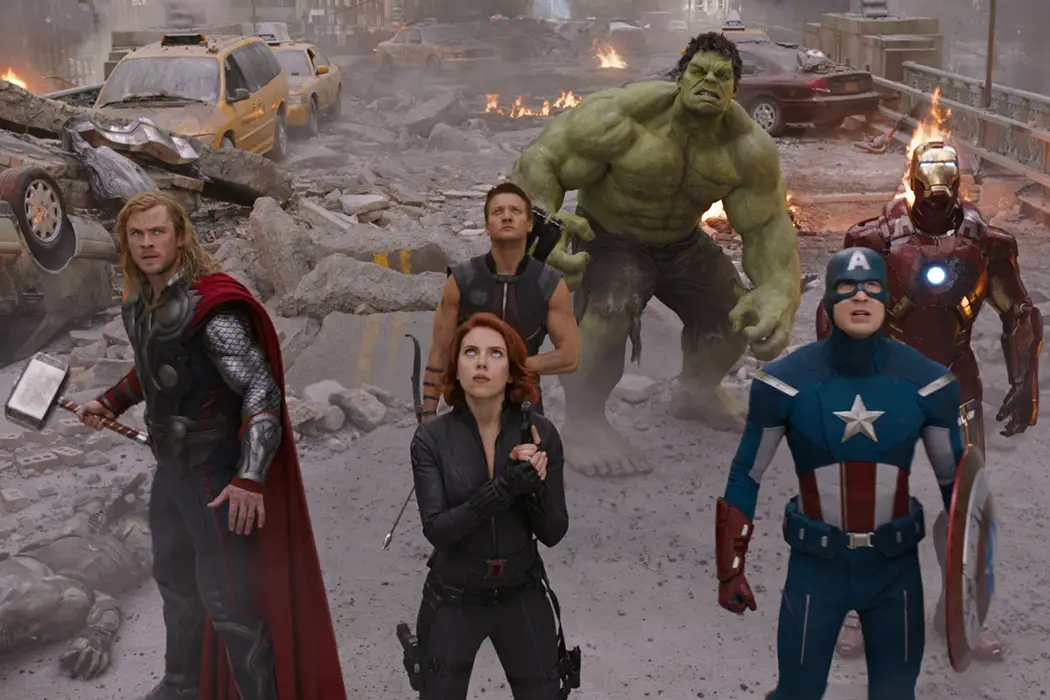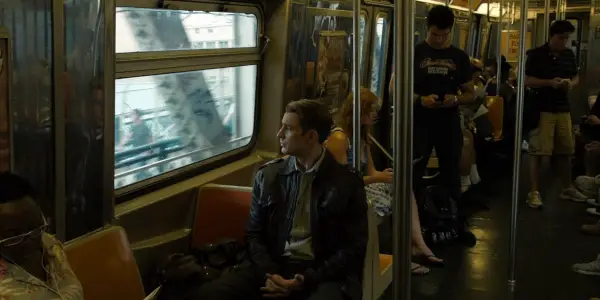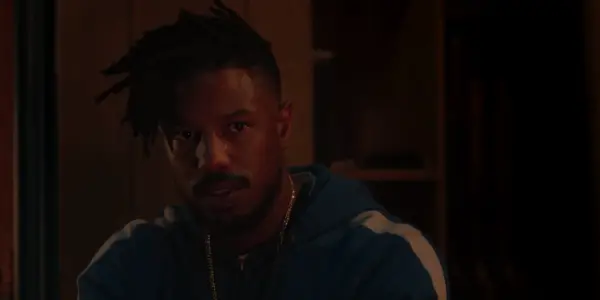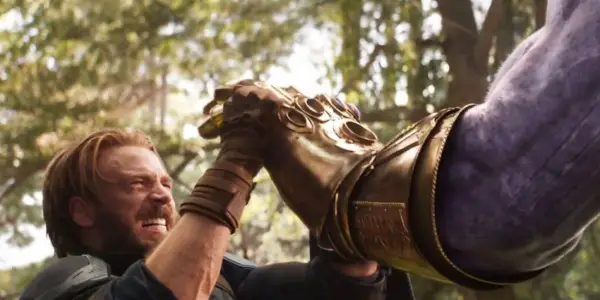How One Avengers Deleted Scene Shows The Central Flaw Of The MCU

Jack is a writer working in London, spending whatever time…
It’s hard to imagine, but seven years ago Marvel Studios’ cinematic universe was far from a sure bet. Iron Man was a gamble, but hoping that characters connected to the outlandish concepts of Thor or the flag-wearing Captain America was one step further into the unknown. Connecting all these stories in one blockbuster, The Avengers, seemed like a gargantuan and foolhardy task, even with the ensemble-wrangling Joss Whedon at the helm.
Not only did it pull it off in a satisfying way, breaking box office records and emboldening the studio to extend their experiment into a dozen more productions, but it managed to pull off the impossible and give each character a reason to be involved. Part of this comes from the intuitive decision to centre a movie of disparate franchises coming together about disparate people struggling to come together. But not everything survived intact.
The First Avenger
By 2019, Steve Rogers has become a contender for fan-favourite character out of all of the MCU, but it was only due to Captain America: The Winter Soldier and (to a lesser extent) Avengers: Age of Ultron that he became well-liked by most moviegoers. Many who turned up to see The Avengers didn’t make the same trip to see Captain America: The First Avenger a year prior, so Whedon’s blockbuster was all they had to go on.
Whedon made his understanding for the character clear in his Avengers sequel three years later, but initially it seemed as if he was the one member of the team not to benefit from the writer-director’s penchant for seamlessly blending exposition and characterisation into punchy dialogue.

For what was, for many, his first introduction, we see Cap angrily beating a punching bag to pieces in an empty gym, before Nick Fury tries to bring him “back into the world”. He’s far more serious and despondent here than in any of his other film appearances, even the darker and more introspective Captain America: Civil War. He is bitter and frustrated, far more relaxed in the latter half’s warzone than in conversation.
This all culminates in his argument with Tony Stark, the character most-known and beloved with audiences at this point. Stark ridicules his usefulness and pokes at his pride, only growing spiteful in response to Steve’s more biting, insulting remarks. It’s clear that there is conflict between the two of them, but why? Tony’s distaste for him fits in well with his anti-authority attitude (“we are not soldiers”), but where does Steve’s resentment stem from?
A Man Out Of Time
There is one simple scene that gives all the context needed for this relationship – a relationship that has gone on to become the centre of several crossover affairs – while also giving the film a necessary pause for reflection. Unfortunately, this scene was cut from the movie.
In the original introduction to Steve, we see a glimpse of his world before Loki’s actions necessitate a response. Ripped from his time, the people he knew, his world, he is now utterly alone in a future that is alien to him. Following from his first introduction to the modern New York City at the end of his solo movie, this quiet scene shows him overwhelmed by the chaos that has become mundane. Despite his large stature, he is dwarfed in frame by large skyscrapers, drowned out by the noise of subway trains, passing cars and crowds of people.
His apartment delivers some respite from the world, but is only one drenched in shadows, as he sits alone, contemplating those he has lost. Dead or alive, the people he knew are now reduced to files, while he is left to suffer the weight of the decades past all at once.
With his emotional state clear, his actions would have been far more understandable. Rather than simply the stern, self-righteous lawgiver (“We have orders, we should follow them”) to Tony Stark’s renegade, he is shown to be a man in pain given no reason to believe the modern world cares at all.
He sees the son of a man he respected as a flippant, irresponsible self-absorbed individual. He bristles when Tony throws out sarcastic quips during important debates and blasts out rock music during nightmare scenarios. Iron Man becomes the embodiment of the future, one that Steve has been forced to adapt to without any latitude.
Motivations and Consequences
Beyond this point, the scene also provides a necessary pause and still reflection for the characters and viewers – one rarely gifted to us in even the MCU’s best entries. I believe this is a recurring flaw that needs to be addressed in future instalments in the series. This deleted scene was likely cut for time, and the film still makes sense without it – but it does go to show the priorities when stitching together a cinematic universe of this scale.
Given their crossover appearances in multiple films and an avid fanbase, it’s easy to fill in the gaps in characterisation for the MCU’s icons with headcanon and callbacks. I’m an easy mark for these moments, but it’s rare to see the true emotional weight of some developments given the time to be felt.
There are some MCU moments of pause and reflection worth mentioning: Doctor Strange’s meltdown after breaking his sacred oath to take another man’s life; Rocket contemplating where his life could lead at Yondu’s funeral; Killmonger’s visit to Ancestral Plane. However, they are few and far between, in stark contrast to the often-bloated action of their third acts.

On the other side of things, I’m drawn to Spider-Man: Homecoming’s moment of crisis for Peter Parker at the homecoming dance. He contemplates whether or not to leave his personal life behind at the worst moment to do the right thing, for all of four seconds. This rushed pacing means that his later struggles carry far less weight than they could have done if his choice had been better dramatised.
Ant-Man & the Wasp reunites Janet with her family, but the the effects of her absence aren’t explored, while the ramifications of her return are relegated to the sequel. Iron Man 3 introduces the threads of PTSD and panic attacks to the character before discarding them. Thor and Loki’s mother is killed by the villain in Thor: The Dark World, with little effect on either of them beyond an yell of anger.
Avengers: Infinity War, for all its narrative efficiency in juggling a dozen characters, is far too jam-packed full of big moments to spend more than a few precious seconds allowing any of it to sink in, let alone pay off what was set up in Civil War. It left much of this responsibility to its sequel, which already had plenty on its plate.
The Endgame
Moments such as these may interrupt the journeys in some way, bringing the fun to a pit stop to take stock over the consequences of actions, but without them a film is limiting itself. It seems, in some cases, to be a choice of momentum over good pacing. In a series where characters are placed so front and centre, Earth’s mightiest heroes sometimes feel under-served.

Age of Ultron is full of fitting examples from both ends of the spectrum. In what is still one of the MCU’s best scenes, Whedon allows his characters to enjoy each other’s company in an extended party scene. There’s a web of inter-connected arcs and themes at play, but they are buried under plot-centric dialogue with perspectives reduced to lines you’d miss if you cleared your throat. Later, Whedon brings the villain to his demise not in a litany of explosions, but a quiet conversation about the grace within humanity’s failings – something which admittedly comes after a breathless half hour of action.
Avengers: Endgame has the weight of a dozen or so plot threads and character arcs to close off, as well as giving a send-off to the MCU at large. As is by now the tradition of this mega-franchise, it attempts to retrofit and solve the mistakes of its predecessors, dedicating little of its runtime to the philosophies or motivations of Infinity War‘s unstoppable villain in lieu of letting its characters deal with the consequences of their actions and the world they’re left with.
While its priorities change soon enough, the first act of the film faces consequences head-on in a way few Marvel movies have, taking time to let us see where the team stand as individuals before they come together. This is most evident with Steve and Natasha, who both struggle to live with the world they’ve been left with, culminating in a particularly moving scene between the pair as they contemplate not just their loss – but what living with this loss every day means.

Similarly, Thor’s entire subplot revolves around his mother, played by the (until now) woefully-underused Rene Russo. Forced to step back to the day of Frigga’s death, unable to stop it yet incapable of looking away, time is given to dramatise and explore his grief, and what was once incidental is given importance – albeit six years after The Dark World was released. Steve and Tony also get to bury the hatchet, but despite the level of importance attributed to it previously, their discussion is short out of necessity.
Thanos and Captain America have ideologies perfectly at odds with one another, as one suppresses his empathy while the other puts his in the driving seat. One is proven worthy of holding Thor’s hammer, while the other thinks of himself as the only one worthy of deciding the universe’s fate.
A conversation between the two of them is full of potential, but a pithy line or two amidst knock-out crowd-pleasing moments is all that is allowed. In many ways, it’s hard to see how they could fit it all in – after all, Endgame is more akin to a comic book crossover event at times than the ensemble story that kicked it all off.
What’s Next
Next up is Spider-Man: Far From Home, another Marvel Studios film given the hard task of existing in the wake of a monumental event. Homecoming ended with Aunt May discovering his identity, a neat twist on the formula that’s ripe for drama, but which ultimately seems to be unimportant. In light of the events of these past two Avengers movies and the recent trailer, it seems they’ve skipped to her becoming a willing part of his life as Spider-Man.
Hopefully, Far From Home gives Peter the time to change and grow in response to what happens to him, and that the next phase of movies that follow it slow down and allow their characters to breathe a little. After all, they are why we’re watching in the first place.
What do you think the MCU should change in the future?
Does content like this matter to you?
Become a Member and support film journalism. Unlock access to all of Film Inquiry`s great articles. Join a community of like-minded readers who are passionate about cinema - get access to our private members Network, give back to independent filmmakers, and more.
Jack is a writer working in London, spending whatever time he has left over watching, over-analyising, and talking about movies.













